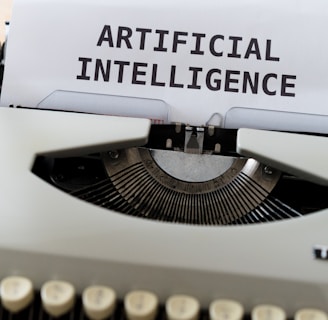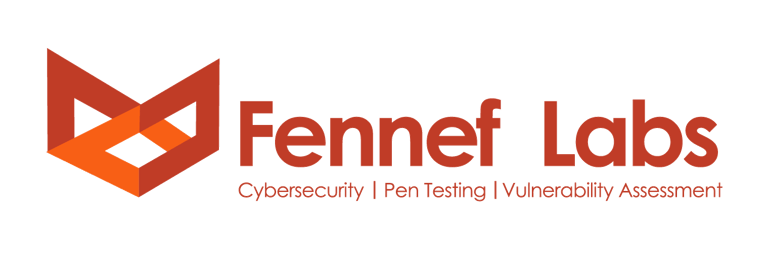AI Driven: Beyond Human Eyes - AI's Unmatched Response to Cyber Threats
AI Driven: Beyond Human Eyes - AI's Unmatched Response to Cyber Threats
2/3/20253 min read


Alright, gear up because the world of threat detection has just levelled up big time. We're not talking about your grandpa's old-school security here; we're diving deep into the arena of AI, where the lines between offence and defence are changing faster than you can say "zero-day exploit."
Forget those clunky, signature-based systems that only react to yesterday's threats. We're all in on AI-powered security solutions that evolve in real-time. These systems don't just detect threats; they actively hunt them down, constantly adapting their defences with every new attack. It's like a high-stakes game of cat-and-mouse, with AI playing both sides.
A peek into the chaos:
Cyber Threats are Shape-Shifting: Think of the usual suspects – data breaches, unauthorised access, and network intrusions. Now, crank that up with polymorphic malware, zero-day exploits, and AI-powered phishing attacks. Traditional security measures are like showing up to a gunfight with a butter knife.
AI is the Ultimate Hunter: AI algorithms, trained on mountains of threat data, can detect anomalies and suspicious behaviour that would slip right past human eyes. We're talking real-time analysis of network traffic, user behaviour, and system logs.
It's Not Just Digital: This isn't just about your computer anymore. AI is securing physical spaces, analysing video feeds for suspicious activity, and even managing access control systems. AI is the new gatekeeper.
But wait, AI isn't just reactive; it's a proactive force:
Machine Learning: Algorithms learn to distinguish between normal and abnormal activities, making threat detection faster and more accurate. They're always improving.
Natural Language Processing (NLP): AI now understands and interprets human language, making it incredibly effective at detecting phishing attacks and social engineering attempts. It's like having a digital lie detector.
Anomaly Detection: AI establishes a baseline of normal behaviour and flags anything that deviates from it. It's constantly watching for the slightest slip-up.
Predictive Analytics: AI analyses trends to predict future threats, giving security teams a crucial head start. It's like having a crystal ball, but for cyber threats.
A breakdown of the AI security toolkit:
AI-Powered SIEM: Platforms that analyse massive amounts of data, prioritise incidents, and reduce alert fatigue. They cut through the noise.
NGAV and EDR: Tools that use AI to proactively detect and block unknown malware and automate incident response. They're constantly adapting shields.
UEBA: AI identifies insider threats and compromised accounts by analysing user behaviour. It watches everyone, even the people on the inside.
Threat Hunting: AI tools proactively search for hidden threats, uncovering suspicious activities that might otherwise go unnoticed. It's like having a private investigator for your network.
Vulnerability Management: AI automates vulnerability scanning and assessment, prioritising risks based on their potential impact. It's always checking for weak spots.
Cognitive Security: This takes AI to the next level, mimicking human thinking to detect manipulations of user behaviour. It defends against attempts to manipulate insiders.
Implementing AI isn't a simple plug-and-play solution. It requires a strategic approach:
Integration: AI systems must integrate with existing infrastructure. They need to play well with existing technology.
Real-Time Monitoring: Continuous analysis of data for anomalies. They’re always on the watch.
Automation: AI automatically triggers security protocols when a threat is detected. It doesn't wait for you to tell it what to do.
Scalability and Flexibility: AI systems must be able to adapt to changing needs. They must grow and adapt with the organisation.
But with great power comes great responsibility. AI in threat detection is not without its challenges:
Data Privacy: AI systems process vast amounts of sensitive information, raising privacy concerns. Organisations must handle this data carefully.
False Positives/Negatives: AI systems still generate false alerts and can miss genuine threats, requiring continuous fine-tuning. The systems are great, but not perfect.
Ethical Implications: User surveillance and data analysis can lead to ethical concerns and privacy issues. Organisations must use these tools responsibly.
Bias: AI algorithms can produce skewed results if not trained on diverse data. Fairness is crucial.
Technical Limitations: AI systems can be complex, requiring significant resources and ongoing maintenance. These tools need constant upkeep.
The future is clear:
AI will continue to reshape cyber security. With new technologies like deep learning, quantum computing, and autonomous response systems on the horizon, AI will become even more powerful. But it will require a careful balance between technical advancements and ethical considerations. AI is not just a tool, it's a revolution. Organisations that refuse to adapt will be left behind. The question isn’t whether you should adopt AI, it's how quickly and effectively you can.

